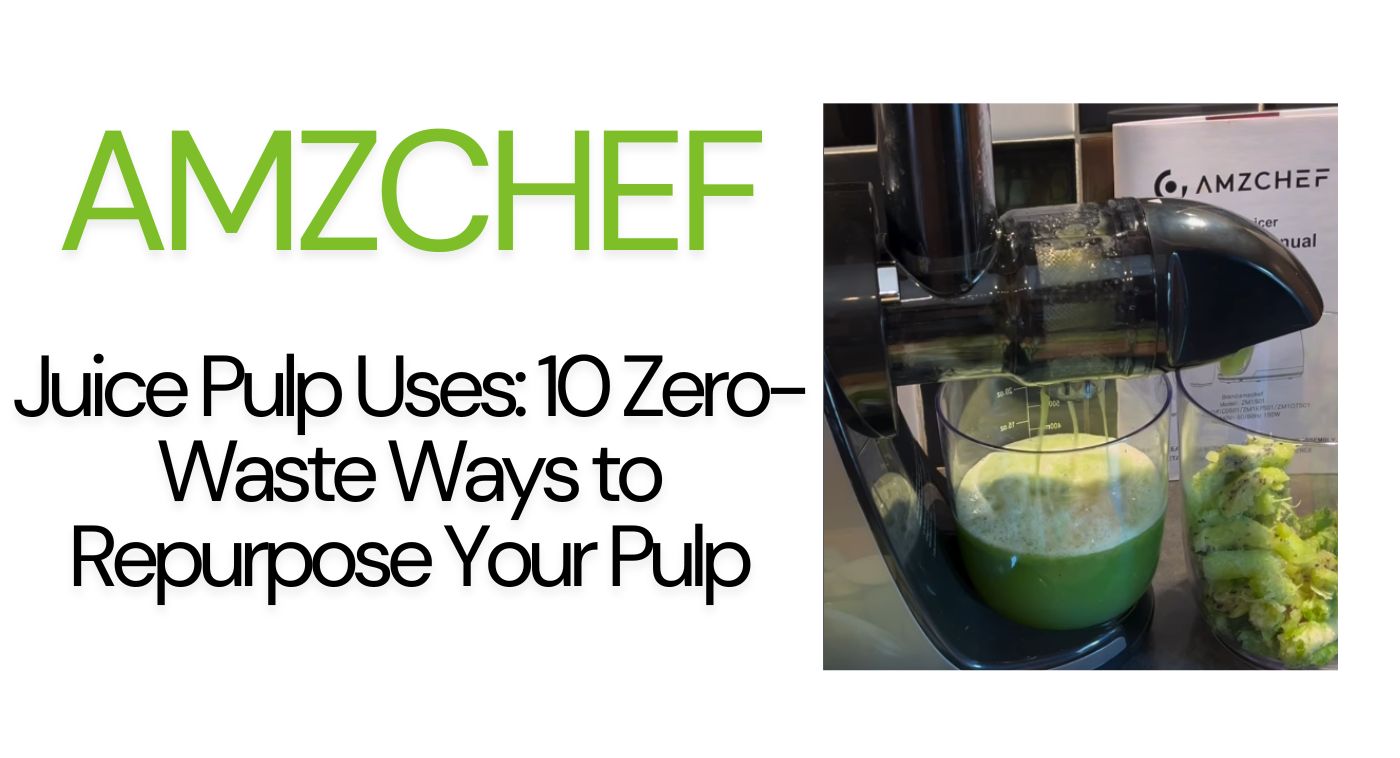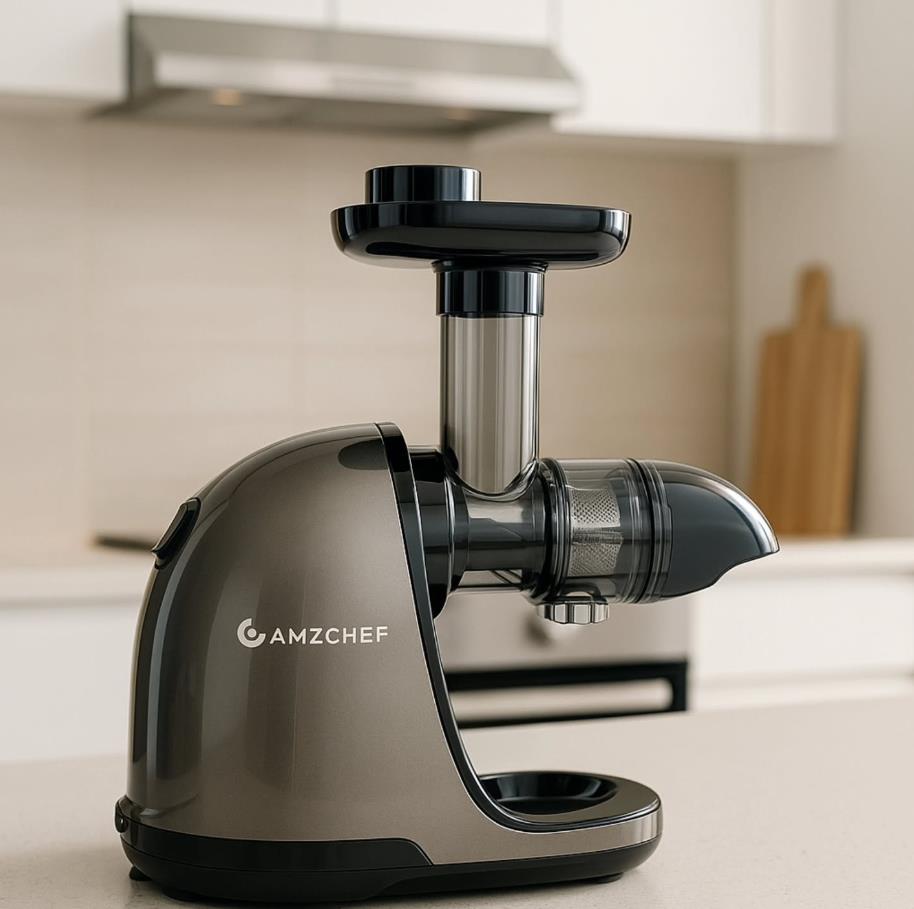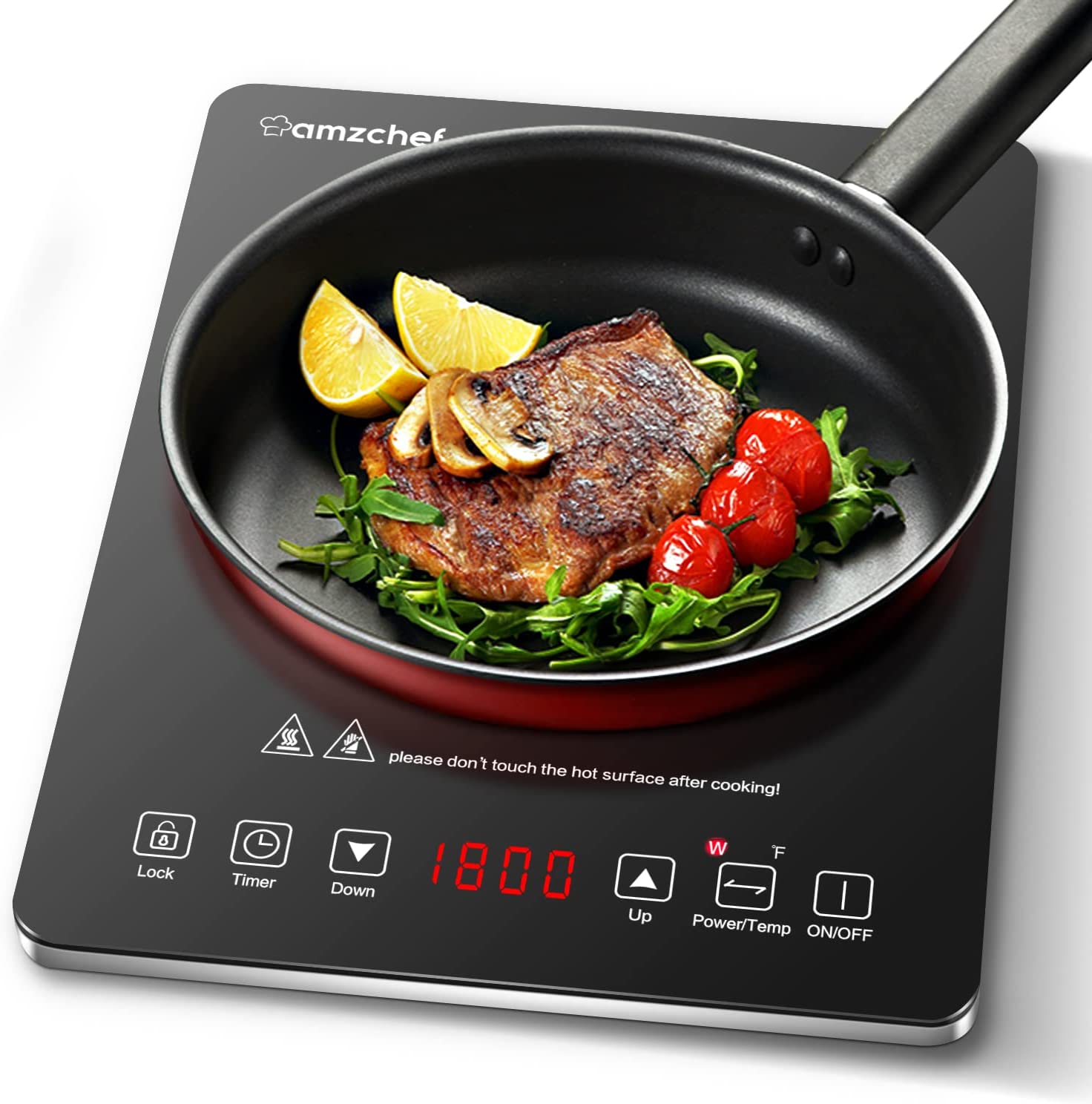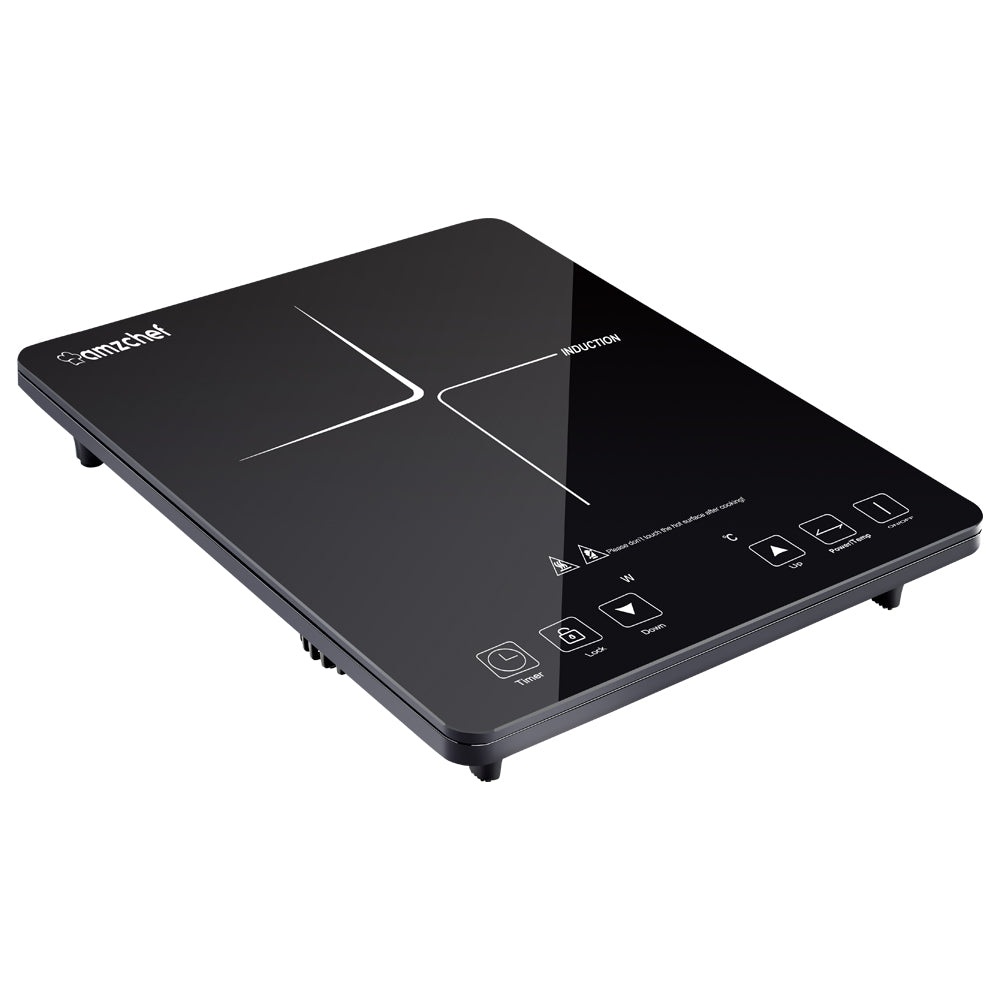The Complete Zero-Waste, High-Fiber Pulp Repurposing Playbook
Every time we juice, a surprisingly large pile of leftover pulp collects in the bin.
Most people toss it immediately—believing it’s useless “waste.”
But the real problem is this: what you're throwing away contains 60–70% of the plant’s dietary fiber, phytonutrients, antioxidants, and functional kitchen value.
That means every time you dump your pulp, you’re also losing the chance to create high-fiber snacks, meal prep staples, natural beauty products, and even garden-friendly compost.
What Will You Learn
- The real benefits of juice pulp
- 6 essential safety rules you must know before reusing pulp
- 17+ creative ways to repurpose leftover juice pulp (PDF)
- How to choose the right type of pulp for each recipe
- Zero-waste techniques that save money and cut kitchen waste
- How I Replaced Dinner with Pulp and Dropped 15 Pounds in 8 Weeks
- A kitchen-tested “Pulp Repurpose Workflow” you can use every day
What Is Juice Pulp, Really? A Simple Definition with Big Importance
When fruits and vegetables are juiced, the extraction process separates:
- Juice → water, vitamins, natural sugars
- Pulp → fiber, micronutrients, phytochemicals, plant solids
Leftover Juice Pulp includes:
- Insoluble fiber (gut-friendly + digestion-supporting)
- Soluble fiber (helps stabilize blood sugar)
- Vitamins (vitamin C, folate, beta-carotene)
- Polyphenols and carotenoids
- Trace minerals
Even though juice contains more vitamins, pulp contains almost all the fiber—the part most people are deficient in. In fact, USDA surveys show:
The average adult consumes only 15g of fiber per day, far below the recommended 25–38g.
This makes pulp one of the easiest zero-cost nutrition boosts you already have at home.
Before Using Pulp: 6 Essential Rules for Safety, Texture & Nutrition
These are the rules I personally follow after hundreds of juicing sessions and recipe tests:
Rule 1. Use within 2 hours at room temperature
Pulp spoils faster than juice because:
- It has more surface area
- More exposure to oxygen
- Higher moisture content
Safe window: 2 hours max (just like fresh-cut produce).
Rule 2. Cold-pressed pulp is superior for cooking
Cold-pressed pulp:
- Drier
- Finer
- Less oxidized
- Keeps structure better
- More suitable for baking & cooking
Centrifugal pulp:
- Wet
- Fluffy
- Airy
- Less stable
- Best for compost or broth
Rule 3. Always separate sweet and savory pulp
Sweet pulp:
Apple, pear, grape, pineapple, berries
→ Use for baking, snacks, smoothies, energy bars
Savory pulp:
Carrot, celery, beet, ginger, spinach, tomato
→ Use for soups, savory cakes, veggie patties, broths
Rule 4. Squeeze or drain excess moisture
This improves:
- Shelf life
- Texture
- Flavor concentration
- Cooking quality
A simple mesh bag works perfectly.
Rule 5. Refrigerate for max 48 hours
No exceptions.
Even in airtight containers, pulp begins breaking down quickly.
Rule 6. Freeze up to 3 months
Best method:
- Divide into ¼ cup or ½ cup portions
- Label as “sweet” or “savory”
- Store flat for faster thawing
Frozen pulp maintains nearly 100% of its fiber and most nutrients.
17 Creative Leftover Pulp Uses
Category A: Sweet Pulp (Fruit-Based)
Perfect for apples, berries, pears, pineapple, grapes.
1. High-Fiber Energy Balls (No-Bake, 5 Minutes)
Why it works:
The natural sweetness + fine texture of fruit pulp acts like a binder.
You’ll need:
- 1 cup sweet pulp
- ½ cup rolled oats
- 6–8 pitted dates
- 2 tbsp nut butter
Steps:
- Blend dates + nut butter.
- Add pulp + oats; pulse.
- Roll into balls.
- Chill 30 minutes.
Texture: Chewy, fruity, naturally sweet.
Best for: Breakfast on-the-go / kids / post-gym snacks.
2. Pulp-Boosted Muffins or Banana Bread
Fruit pulp improves moisture without adding oil.
Usage guideline:
Replace ¼ of the flour with pulp (by volume).
Adds:
- Fiber
- Moisture
- Natural sweetness
3. Pulp Cookies (Crispy Edges, Soft Centers)
For oatmeal cookies, add ½ cup pulp to any recipe.
Apple + cinnamon pulp is especially good.
4. Smoothie Bowl Thickener
Use 2–4 tablespoons to increase thickness and fiber.
Benefits:
- Smoothies become more meal-like
- Better satiety
- Naturally sweet
5. Fruit Leather (Dehydrated Pulp Snack)
Spread pulp thin (¼ inch) → dehydrate at low heat for 6 hours.
Cut into strips.
Tastes like a natural fruit roll-up.
6. Homemade Granola Clusters
Mix:
- Sweet pulp
- Rolled oats
- Honey
- Coconut oil
Bake 25 minutes → crunchy, fragrant, high-fiber clusters.
7. Popsicles / Ice Lollies
Blend pulp + juice + yogurt → freeze in molds.
Kids love this.
Category B: Savory Pulp (Vegetable-Based)
Great for carrot, celery, beet, spinach, ginger, tomato.
8. Veggie Patties / Burger Patties
One of the best ways to use savory pulp.
Ingredients:
- 1.5 cups vegetable pulp
- 1 egg (or flax egg)
- ½ cup whole-wheat flour
- Salt, pepper, herbs
Instructions:
- Combine all ingredients.
- Shape into patties.
- Pan-fry 3–4 minutes per side.
Texture: Firm, chewy, satisfying.
Use for: Meal prep, burgers, lunch boxes.
9. Vegetable Broth Base
One of Hurom’s official methods—but upgraded.
Method:
- Boil pulp with garlic, bay leaves, peppercorns.
- Simmer 20 minutes.
- Strain → golden, flavorful broth.
Use for:
- Risotto
- Tomato soup
- Curry base
- Stir-fry liquid
10. Pulp-Infused Tomato Sauce / Bolognese
Carrot pulp reduces acidity and adds natural sweetness.
Add ½ cup pulp to simmering tomato sauce.
11. Savory Quick Bread
Carrot/celery pulp pairs perfectly with:
- Rosemary
- Thyme
- Cheese
- Olive oil
Moist and aromatic.
12. Egg Muffins with Pulp
Mix pulp + eggs + cheese → bake in muffin cups.
High-protein, low-carb meal prep.
13. Fiber-Boosted Stir-Fry Base
Add ¼ cup pulp when sautéing garlic/onions for:
- Fried rice
- Noodles
- Omelets
- Tacos
Adds body & nutrients.
Category C: Beauty, Home, and Garden Uses
14. Natural Face / Body Scrub
Carrot or apple pulp works best.
Mix with:
- Honey
- A few drops of jojoba oil
Gently exfoliates without irritation.
15. DIY Cleaning Paste
Citrus pulp + baking soda →
Removes grease naturally.
16. Compost / Worm Bin Material
Breaks down quickly because it’s already shredded.
Best compost mix:
2 parts brown material : 1 part pulp.
17. Garden Mulch / Soil Conditioner
Spread a thin layer of pulp around plants.
Helps retain soil moisture and adds organic matter.
Save: 17 Creative Leftover Pulp Uses(PDF)
Share: How I Replaced Dinner with Pulp and Dropped 15 Pounds in 8 Weeks
(Marry | 33-year-old Asian-American woman | Jan 1 – Feb 25, 2025 | Height 5'5" (165 cm) | Start: 162 lbs → End: 147 lbs | Only changed dinner, walked 3×/week)
My Exact Routine (Perfect for anyone who already juices in the morning)
7:00 AM → Juice 1 big glass for breakfast (celery + apple + carrot + ginger, etc.)
Save ALL the pulp in a 1 L glass container → straight to fridge
6:30 PM → That same pulp becomes dinner (350–450 g + protein)
Zero extra work. The pulp is already there!
My 5 Lazy Dinner Winners (< 10 min prep)
1. Mexican Bowl → morning veggie pulp + rotisserie chicken + salsa
2. Thai Shrimp Soup → pineapple pulp + frozen shrimp + dash of coconut milk
3. Cheesy Air-Fryer → broccoli pulp + low-fat cheese + ground turkey (8 min)
4. Big Miso Soup → cabbage pulp + tofu + miso paste
5. Tuna Greek Salad → cucumber-tomato pulp + canned tuna + Greek yogurt
All 260–350 kcal, 15–22 g fiber, 25–35 g protein.
8-Week Drop
Week 1: −4.2 lbs
Week 4: −10.8 lbs
Week 8: −15 lbs Done!
First 3–4 days felt hungry at night, then suddenly never hungry again.
Been holding 146–148 lbs the whole 2025 just by keeping this “morning juice → evening pulp” loop.
If you already juice every morning like me, you literally have a free weight-loss dinner waiting in the fridge every single day.
Conclusion — Your Zero-Waste Kitchen Starts Today
Leftover Juice Pulp is not waste.
It is the simplest, most affordable way to:
- Boost dietary fiber
- Enhance meals
- Reduce grocery bills
- Lower food waste
- Support gut health
- Live a more sustainable lifestyle
About Another
This guide is based on my own 8-week personal record as a 33-year-old Asian-American woman who juices daily and follows a culturally mixed diet. All weight changes were verified using a Withings Body+ smart scale, and nutrition data was tracked in Cronometer. Every pulp-use method shared here comes from real kitchen testing and long-term juicing habits—not theory.
If you have questions, want to verify any part of my routine, or need help adapting the pulp recipes to your own lifestyle, you can reach me directly. I make myself available because I stand behind every detail I share—and I believe transparency builds real trust.
Leave your comments in the comment section so everyone can see them.
Email: info@iamzchef.com
I reply to most messages within 24 hours.







